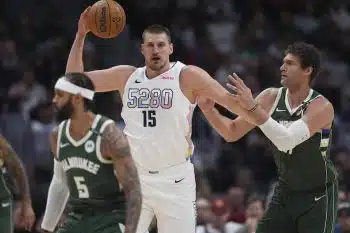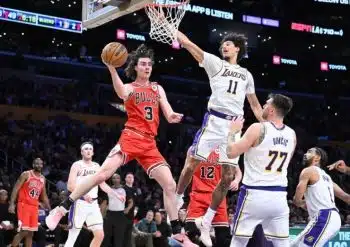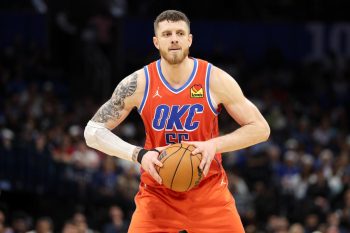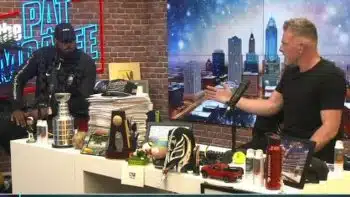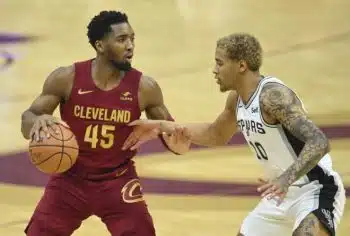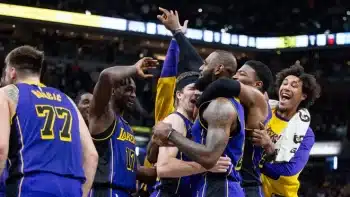NBA
4 Thoughts On Paul George’s Fit With The Sixers
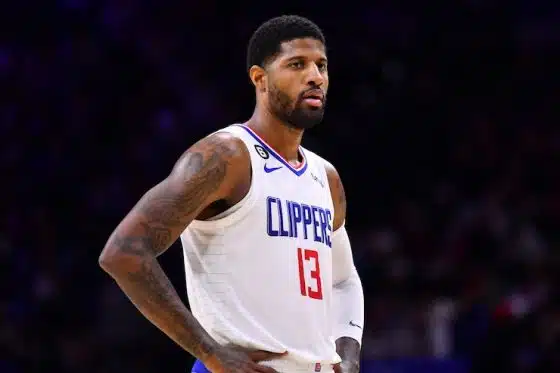
Key Highlights
- Paul George has agreed to a four-year, $212 million deal with the Philadelphia 76ers
- George shot 45.4 percent on catch-and-shoot threes in 2023-24
- According to Cleaning the Glass, he’s ranked in the 90th percentile or better in steal rate 10 times throughout his 14-year career
After months of speculation and increasingly firm reporting, Paul George agreed to join the Philadelphia 76ers during the wee hours of Monday morning. George leaves the Los Angeles Clippers following five seasons with the franchise and will sign a four-year, $212 million max deal to become a Sixer.
Despite his age (34), gradual decline and perplexing tendencies on both ends, George is instantly one of the best free agent acquisitions in Philadelphia’s history. He is a top-30ish player and provides Joel Embiid with the most dangerous two-way wing play that the 2022-23 MVP has seen since Jimmy Butler‘s brief stay five years ago — a time before Embiid summited to his towering superstar, MVP heights.
Although the offseason is rather young, Philadelphia still has some holes to address to really amplify the roster and this Embiid-George-Tyrese Maxey trio.
There’s plenty of time to shore up the guard/wing depth and land a viable starting four (though, the latter could be a bit of a challenge). While the Sixers aren’t flush with cap space after adding George, Andre Drummond and Eric Gordon, and retaining Kelly Oubre Jr., they do own a handful of movable first-round picks to upgrade the surrounding roster between now and the 2025 trade deadline. That star-laden foundation is a wonderful launching pad regardless.
I’ve been outspoken about my hesitancy of signing George to a max, both for his relative struggles in 2023-24 and his constantly evolving description of an ideal on-court role — one that always seems to be something other than what his current situation presents or asks. At this point, the contract is what it is. The Sixers offered it. He’s going to sign it. My opinion on the dollar amount is irrelevant, as if it ever really mattered. The lone aspect that matters is assessing his fit in Philadelphia and how everyone involved can work to maximize it, himself included.
So, here are four thoughts about the newest high-profile Sixer.
The Impact Of George’s Shooting
George may not be the absolute best shooter with whom Embiid’s ever operated. JJ Redick and Seth Curry were fantastic, as is Maxey today. Yet George might end up as the most valuable marksman to play alongside the big fella. He’s a dynamite off-ball shooter who’s capable of carrying a significant workload. Redick’s usage rate hovered around 20 percent during his Philadelphia tenure. Curry’s stuck near 18 percent. George’s hasn’t dipped below ~25 percent since 2012-13 — his third NBA season.
Meanwhile, Maxey has assumed lead guard duties since James Harden’s departure, which negates some of his off-ball impact. That’s not a criticism of him, merely a reality of a shifting role that demands he catalyze more possessions and boogie out less often as an off-ball shooter. George, though, will be the third banana offensively. He’ll be the foremost spot-up option when Embiid is situated at the nail and mid-post, or when he links up with Maxey for their devastating ball-screen connection.
Since 2017-18, the veteran forward has drilled 40 percent of his triples with more than 3,400 total attempts. Last season, he shot 45.4 percent on catch-and-shoot long balls. His 41 percent clip overall from deep featured 44 percent in the corners and 41 percent above the break. He’s a legitimately big movement shooter and flows off of screens to confidently fire over a variety of contests.

Empty side dribble handoffs for George with Embiid should be a staple. I’m fascinated to see what Nick Nurse diagrams with two elite off-ball shooters at his disposal. Let Embiid control the action as Maxey and George wind through screens. Capitalize on their gravity.
Many teams may roster a pair of high-level shooters. Ones with the wide-ranging scoring prowess of Maxey and George to be threats even if the initial shot isn’t available is a rarity. Take advantage of that to open up opportunities for Embiid — among the league’s premier scorers — or others. There’s lots to test with them.
Directing most of George’s scoring load toward these situations would be prudent, given some of the glaring on-ball shortcomings. He needs to be a focal point offensively, but he’s simply not a reliable creator. That mantle should predominantly fall on Embiid and Maxey’s shoulders, yet it cannot prevent George from sitting central to most possessions in some form.
How Much Creating Can George Handle?
In 2023-24, George authored the second-most efficient scoring campaign of his 14-year career. His 61.3 percent true shooting was 3.3 points above the league average of 58 percent. Only once has he finished higher above, which came in 2016-17 (58.7 percent vs. 55.2). Part of the reason for that efficiency was the addition of Harden, who took the reins as Los Angeles’ point guard to set the table for George and Kawhi Leonard.
That wing duo thrived as Harden allowed them to catch the ball in their preferred spots rather than needing to get there themselves. Fifty-seven percent of George’s field goals came via assists, the third-highest mark of his career — bested in 2011-12 and 2012-13 (58 percent each time).
His box score helped mask some of his continued decline as an on-ball creator. It’s not a task he seemed consistently up for last season. He lacks much burst or strength as a downhill driver, is a pretty shaky playmaker and resorts to midrange pull-ups in these scenarios — either because he can’t reach the rim or is unwilling to even try.
Most nights, he’s usually good for one or two maddening, open court turnovers, the product of inaccurate or telegraphed, premeditated decisions the defense is giddy to invite. At 6-foot-8 and without sprightly athleticism or sturdy core strength, pursuits inside the arc can be an adventure that let defenders bend him to their will rather than imposing himself.
It wasn’t a complete disaster every time George called his own number. According to PBPStats, his effective field goal percentage on self-created shots was 51.6, slightly above the league average of 49.8. He buried 35.8 percent of his pull-up threes. He’s long been a good laydown and pocket passer, which pairs aptly with Embiid; it’s the complex, cross-court, elongated reads that trouble him typically.

All of this is to wonder: what level of creator can George be for the Sixers and what are the ripple effects of whichever level he establishes? Can he be good enough to buoy the offense alongside Maxey while Embiid rests? Or will he further descend into primarily an off-ball player who needs Embiid around to augment him?
Philadelphia, of course, is bringing him into accomplish the former. I imagine the initial substitution patterns will reflect that trust. But will he reward its faith? Can he?
If he cannot, does Drummond’s screening open up enough for Maxey as a pick-and-roll scorer? Is there some low-hanging fruit schematically for Nurse to unlock that Los Angeles’ (and George’s) stagnant identity held back?
I find myself fairly skeptical of George’s on-ball prowess at this stage of his career. That, however, doesn’t mean he can’t succeed in the proper setting. Maybe, the Sixers are the proper setting. He’s going to get his chances. I’m curious to watch the results and varying frequency of those chances as his Philadelphia stay progresses.
What Does George’s Offensive Usage Look Like?
Part of the appeal in this George-Sixers pairing is the offensive production of the incumbent stars. Last season, Embiid touted a 38.9 percent usage rate. Maxey was at 29.1 percent. Comparatively, George’s previous running mates combined for a 51.2 percent usage rate (Leonard: 26 percent; Harden: 25.2 percent).
Usage rate is not a perfect proxy for offensive responsibilities; it just summarizes who is punctuating possessions with a shot, turnover or assist. It indicates nothing about the process to those endpoints. Harden’s job offensively was more arduous than George or Leonard, even if his usage rate was slightly lower than theirs.
The benefit of teaming up with Embiid and Maxey is they can commandeer more of the burden than Leonard or Harden did. It’ll encourage George disperse some his efforts elsewhere whereas Los Angeles’ environment needed his secondary scoring and ball-handling — not that the Clippers were a detrimental ecosystem by any means.
Leonard’s a tremendous scorer who the Clippers (presumably) did not overextend in a (sadly unsuccessful) effort to avoid serious injury last year. Harden is a virtuoso facilitator whose scoring dynamism has waned in recent seasons. Embiid and Maxey hold limitations (the former with serious health worries, too), but they can certainly backpack an offense together.
What does that mean for George? What does he want it to mean? What do the Sixers want it to mean?
Surely, he will not be brought in to only fill a blend of Oubre and Tobias Harris‘ 2023-24 offensive roles. Even if he’s not the creator of a few years ago, he’s still useful in spurts and Philadelphia will need that. The key is being particular with both the shape of his creation and usage as a whole.
I’d like to see Maxey-George screening actions on the ball. George is the first true star wing Maxey has played with — let alone since his own star ascent — and both are rockstar shooters.
George, however, doesn’t always play up to his size, relegated to a shooting guard in a forward’s frame with his decision-making and shot profile. That could hinder some of the possible potency if switching doesn’t expose the defense. Switching keeps the ball in front. Forcing teams away from that has to be perilous; there must be a threat switching leaves itself susceptible to. George is prone to settling and giving switches the win.
Not all of his off-ball deployment will result in threes. When he doesn’t fire away, he’s something of a deliberate player off the catch and that negates advantages he inherits. Becoming a swifter decision-maker in these situations is imperative to the Embiid-Maxey-George partnership. I’m a bit dubious George will or can tweak his approach. Doing so would be quite worthwhile.
Further, George’s usage rate was 26.2 percent in 2023-24. If it drops to ~22 percent, will he actually embrace some of the dirty work he’s talked about and cozied up to at points in his career, yet overwhelmingly ignored last season?
He’s a great off-ball shooter. The movement and motor could see a lot more activity to warp opponents; his footprint shouldn’t solely exist when the jumper falls because he’s too lethal as a shooter for that faint of a signature.
The off-ball focus defensively needs to be sharper, as does the consistency at the point of attack, whether it’s punctually fighting over screens (where he can excel) or sitting down in a stance to slide his feet.
Hypothetically, less strain as a scorer should spark adaptations in these ways. Hypotheticals, though, are integral to the Paul George Experience. There’s always something that he should be able to do more of or better if one thing changes. Philadelphia could be the opportunity to prove that a reality. Los Angeles could’ve been, too. At a certain point, the change just has to happen separate from outside influences.
An alternative could be George maintaining his 26ish percent usage rate and siphoning some from Embiid. Ease his life. Encourage him to be the dominant anchor defensively of last year without asking as much of him offensively in the regular season.
This may require George to become an unattainable relic of himself. The offensive concessions potentially stemming from such a move may aid Philadelphia’s defense enough to offset that anyway. A replenished Embiid is a defensive game-changer and lessens the risk of a fatigued, reckless gamble causing injury.
The question of his usage is such an intriguing, crucial mystery. There are an array of directions Philadelphia could take it with regards to how much and what it looks like (on the ball, off the ball, schematically). Some of that mystery is probably removed as the roster is filled out. But I nonetheless remain curious. It’s important to the ceiling of this experiment.
Some Fun Defensive Possibilities
During each of George’s five seasons with the Clippers, never did they rank above 16th in opposing turnover rate. George finished in the 88th percentile or better in steal rate four of those times. Across his 14 years, he’s finished in the 90th percentile or better 10 times.
Some of that dissonance is about Los Angeles not necessarily employing a quick, rangy, high-flying roster designed to snag takeaways. It also underscores the conservative defensive schemes George saw under Doc Rivers and Ty Lue.
That changes with the Sixers. They were fourth in opposing turnover rate last season. The Toronto Raptors placed top two in four out of Nurse’s five seasons at the helm. It’s likely George will be emboldened by his new head coach to dart around and ignite the league’s most efficient transition offense of 2023-24.
With his size and fluidity, George covers so much ground. He’s incredibly slippery wielding his 6-foot-11 wingspan. It’s almost like offenses are playing a game of inverted Whac-A-Mole — best suited to dribble and pass when those limbs are hibernating, but unsure when exactly hibernation will occur.

George cobbled numerous excellent defensive seasons with Los Angeles. Last year was not among them. He disengaged far too regularly. An Oubre-George defensive duo at the point-of-attack is pretty dang sprawling, if he recommits. That’s a daunting expectation at age 34. It’s not implausible, though. He’ll have his times to wreak havoc as a roamer. Nurse assuredly wants to guarantee he sees ample time there, too.
But he’s also on a max contract and lauded for his on-ball defense. Philadelphia will have him wrangle with star initiators and form a gnarly pick-and-roll tandem with Embiid. He’s shown the ability. The night-to-night — heck, possession-to-possession — dependability escaped him a year ago.
Perhaps, the looming contract situation (some of which was his own doing) affected him. Perhaps, Father Time is the real culprit. Either way, the expectation is two-way stardom. His 2023-24 film is littered with signs he might not be an all-encompassing version of that these days. That would leave Oubre with considerable point-of-attack pressure every game.
If it’s a blip, there’s loads of defensive potential with George near the forefront. And even if it’s trending toward the norm, his defensive playmaking should sustain. That complements his new head coach’s philosophies well and offers some fun options.
It’s a synopsis of the entire fit: good with paths toward both great and frustratingly, predictably underwhelming.
